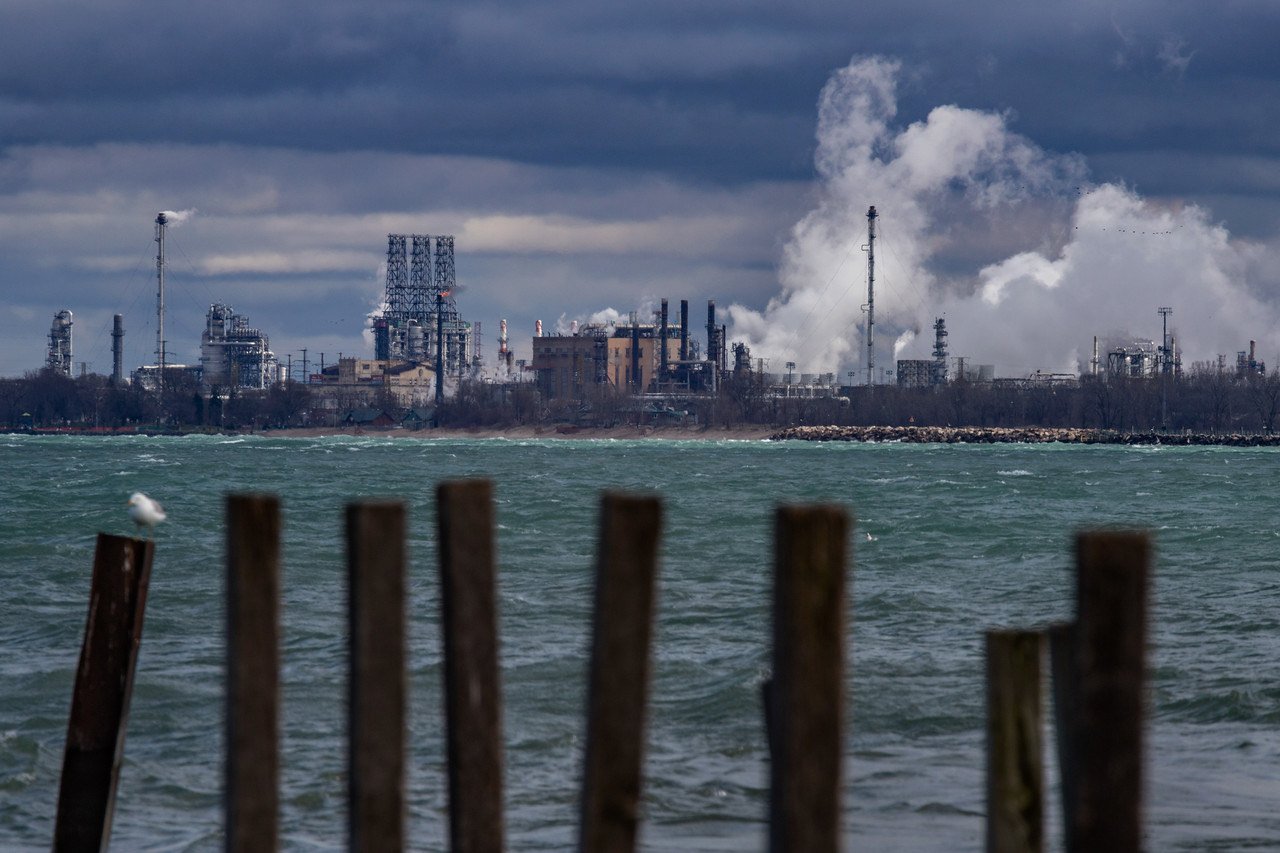No False Solutions NWI Campaign
JTNWI launched this campaign to advocate for real, sustainable solutions that prioritize people and the planet and against false solutions being greenwashed by corporations.
A false solution is a technology that companies claim to be a climate solution, but, in fact, creates even more pollution and harm! Northwest Indiana is being targeted for expensive, false solution projects that threaten our safety, including a massive hydrogen hub. Dirty hydrogen created from fossil fuel energy is ineffective and dangerous for already overburdened neighborhoods in the region.
As part of the federal hydrogen hub program, the Department of Energy (DOE) recently awarded the Midwest Alliance for Clean Hydrogen Hub (MachH2) to create hydrogen projects in Indiana, Illinois, Michigan, and Iowa, proposing up to $1 billion in taxpayer dollars for all four completed phases. MachH2 plans to utilize gas, nuclear, and wind power to produce hydrogen, with the goal of reducing emissions from industries such as manufacturing, steel and glass production, power plants, oil refining, and heavy-duty transportation.
Within the hub, BP Whiting refinery proposed to construct a hydrogen production facility using fossil gas to produce “blue hydrogen." This would have required hundreds of miles of dangerous pipelines to be built through Lake, Newton, Jasper, White, Benton, and Pulaski Counties to transport and store 23 million metric tons of CO2 annually created from its hydrogen facility and the neighboring steel industry. The project, called “Project Crossroads,” was poised to receive up to $138 million in funding from the DOE and the State of Indiana.
Campaign Timeline
What are the false solutions being pushed in the Region?
-
Carbon capture and sequestration (CCS) is a technology that captures carbon emissions at fossil-fueled power plants and industrial facilities. The carbon is then either sequestered underground or put to use.
CCS is linked to:
Surface migration resulting in asphyxiation and death and stalled vehicles
Water and soil contamination resulting in contamination of our drinking water and the leaching of other contaminants
Earthquakes due to the activation of existing or the creation of new faults and fractures of tectonic plates.
CCS goes hand in hand with the MachH2 because the hub proposed to utilize blue hydrogen, which is fossil-fuel derived, with the addition of CCS, where CO2 is filtered out of emissions and stored underground in dumps or pipelines.
One needs to look no further than the 2020 CO2 pipeline explosion in Satartia, MS, to see the disasters that are possible with CCS pipelines. The emergency was so dire that the Pipeline Hazardous Materials Safety Administration at the Department of Transportation agreed to revisit the regulations.
CCS projects are already underway in Indiana. In Vigo and Vermillion Counties, Wabash Valley Resources plans to build a fertilizer plant and create, transport, and dump 1.67 million tons of waste carbon dioxide (CO2) every year for 12 years, which would make this project the largest CO2 dump in U.S. history. Due to the advocacy of community members and the Citizens Action Coalition, this proposed project is getting notable pushback.
-
Hydrogen is being touted as a replacement for fossil fuels, as it can store energy for transport and use later. Hydrogen can be made by splitting water, H2O, with a lot of electricity, and a machine called an electrolyzer. Various resources, including fossil gas, steam, nuclear power, biogas, and renewable energy sources such as wind and solar energy, can power the electrolyzer.
Ninety-nine percent of hydrogen is currently produced using fossil fuels. All forms of hydrogen use vast quantities of water, which will impact our Great Lakes ecosystem. Hydrogen transportation poses unique safety issues: it is highly flammable, burns hotter than gas, and is more explosive and corrosive to pipelines.
When perfected and implemented with true community buy-in and consent, green hydrogen created from renewable energy is the only feasible hydrogen source in decarbonizing Northwest Indiana’s steel sector, also known as “green” or sustainable” steel.
Northwest Indiana Spotlight
Northwest Indiana has long been the heart of America’s steel industry. For decades, companies like BP, U.S. Steel, and Cleveland-Cliffs have powered the local economy and provided good-paying jobs for more than 28,000 workers. This area, part of the historic Rust Belt, is home to four of the nation’s eleven steel mills, making it the foremost hub for coal-based steel production.
But all this industrial activity comes with a cost. In Lake County, Indiana, communities are exposed to more toxic releases than 99% of all other counties across the country, and the state ranks second in the nation for the most industrial pollution released per square mile, with steel emissions as the top contributor.
The International Energy Association says the steel industry needs to slash its emissions by at least half by 2050 to meet global climate goals. Big car companies like GM, Honda, Toyota, Stellantis, and Subaru—all of which have factories in Indiana—have also pledged to clean up their supply chains and become carbon neutral in the coming decades. In an attempt to meet these targets, some companies are pushing projects like the Midwest Hydrogen Hub, falsely claiming they are a climate solution.
As we respond to these projects, JTNWI is pushing back and calling for a just transition to energy efficiency and renewable power that safeguards good union jobs and protects people’s health and the planet. We are also demanding community transparency and accountability at every step and working with other hydrogen-impacted communities.




Hydrogen Energy: A Critical Review to Ensure Community and Climate Benefits
Our approach is guided by a report called “Hydrogen Energy: A Critical Review to Ensure Community and Climate Benefits.” JTNWI and other frontline groups co-authored this report by Just Solutions Collective.
The framework advises against using fossil fuel hydrogen and advocates for protecting water resources, improving safety and accountability, and utilizing only green hydrogen generated from renewable energy to reduce carbon emissions in “hard-to-decarbonize” sectors, such as steel. In Northwest Indiana, we must build what we need now to protect communities and workers.

We demand accountability on dirty hydrogen projects
Contact your Indiana Congresspeople to advocate for community transparency and accountability on dirty, unsafe hydrogen and carbon capture and storage federal projects impacting our state.




